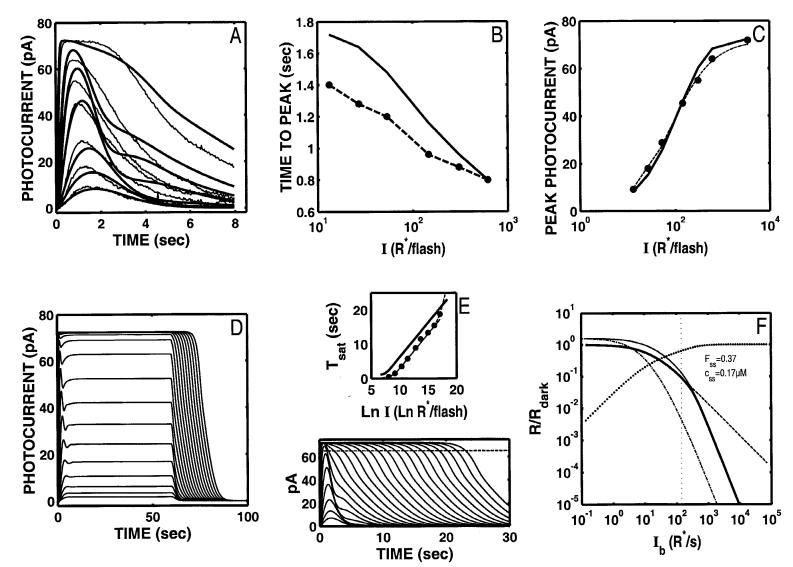Fig. 4.
S/R suite after optimization of Nikonov et al. model to the Ref data with the rate-limiting “front-end” time constant (τE*) held at 2 s so that a Tsat slope of 2 s/ln unit is generated by the model (solid curve, panel E). However, this feature is achieved at the expense of the model’s ability to achieve a fit to the Ref data (panels A-C). Moreover, the model Tsat function still lacks the acceleration at high intensities that is observed empirically (compare solid curve in Fig. 4E with the top half of Fig. 1E). The range of the model’s Weberian LA is about the same as with the parameters fully optimized (cutoff Ib = 142 R*/s), but is still much smaller than observed empirically. The coding for all the curves in F is as in Fig. 2F.

